Air purifiers are increasingly becoming an essential household companion for many families. Not only do these devices improve air quality, but they can also filter out pollen, bacteria, viruses, some mist particles, and even moisture.
This is why an air purifier should be present in a Northern home during the early days of the Lunar New Year, when the humid weather turns your living space into an unwanted sauna.
However, not all devices on the market can filter out the factors mentioned in the introduction. For a machine to be effective, it must have HEPA-standard filters, which stands for High-Efficiency Particulate Air, meaning High-Efficiency Particle Capture.
Dyson’s new air purifier product line, called Purifier Cool, and the HEPA-standard air filter found in Tesla vehicles are examples that demonstrate how effective a quality filter can be.
Conditions for HEPA Standard Filters
A filter must meet certain efficiency levels to achieve HEPA standards. According to European standards (ISO), the mesh must filter out 99.95% of particles with a diameter of 0.3 micrometers, and its performance in filtering larger and smaller particles must also be high.
A HEPA filter will capture pollen, dust, dirt, moisture, and bacteria (with diameters ranging from 0.2 to 2 micrometers), viruses (with diameters from 0.02 to 0.3 micrometers), and mist particles (superfine water particles existing in both liquid and solid forms, sized from 0.02 to 0.5 micrometers).
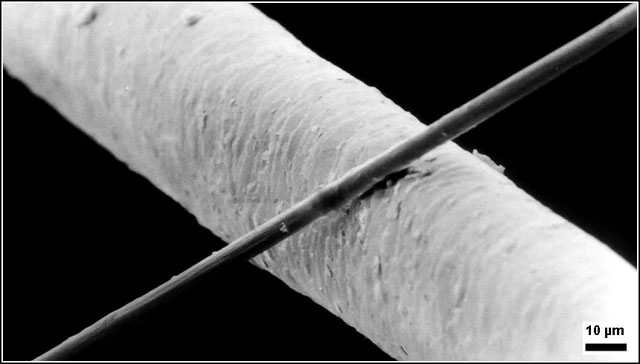
A carbon fiber with a diameter of 6 micrometers placed on a human hair with a diameter of 50 micrometers – (Photo: Internet).
The HEPA standard was officially commercialized in the 1950s and has since become a hallmark of quality for effective air filtration systems. HEPA filters are commonly used in spaces where impurities frequently occur, such as electronics manufacturing plants, nuclear facilities, and essential goods production plants.
As production costs have decreased, air purifiers equipped with HEPA-standard filters have entered households and appeared in cars.
How HEPA Standard Filters Work
The idea of filtering air through multiple layers originated from the gas masks used by soldiers during World War II. By placing a piece of paper into the German gas mask filters, soldiers noticed a significant increase in the mask’s ability to filter chemical gases. After years of research and improvement, the HEPA filter standard was officially commercialized in the 1950s.
Like the gas masks of the past, HEPA filters consist of a series of thin filter membranes. Typically, the filter fibers are made from polypropylene or fiberglass, with each fiber having a diameter of 0.5-2 micrometers, and a filter will contain a bundle of these fibers. As air passes through the filter, impurities are trapped by these bundles of material.
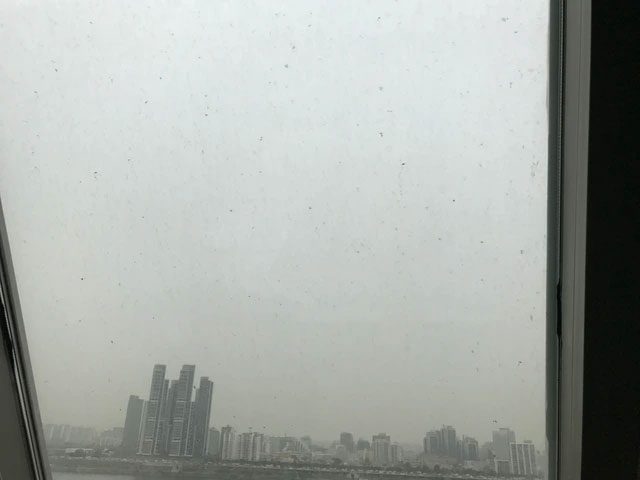
Dust accumulated on the glass window of a building in Seoul – (Photo: Internet).
As particles pass through the filter membranes, larger particles cannot pass due to their oversized dimensions. Smaller particles, while not directly obstructed, cannot keep up with the movement of the air—which is constantly changing direction due to the fiber bundles—causing them to collide with the membrane and become trapped.
The smallest particles have low inertia and always move chaotically (a phenomenon known as “Brownian motion”) around air atoms and will eventually collide with the membrane and be retained. These details are extracted from a scientific report titled “High-Efficiency Particulate Air (HEPA) Filters in the COVID-19 Era: Function and Performance.”
Specifically, particles of three different sizes are filtered by three mechanisms as follows.
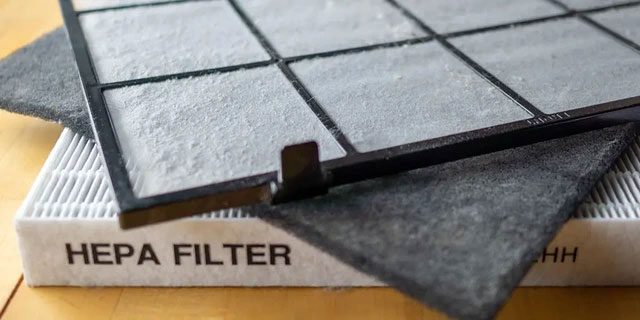
HEPA standard filters consist of multiple membranes – (Photo: Internet).
- 1. Diffusion: particles smaller than 0.3 micrometers are captured due to the diffusion occurring within the filter, where tiny particles continuously collide with air molecules. Small particles drift in the air and are captured by two other mechanisms: interception and impact.
- 2. Interception: as they flow with the air and approach the range of a filter fiber, impurities are drawn close to these fibers. The interception mechanism effectively removes medium-sized particles.
- 3. Impact: larger particles cannot pass through the filter membrane.
The diffusion mechanism primarily removes particles with diameters under 0.1 micrometers, while the interception and impact mechanisms are most effective at filtering particles larger than 0.4 micrometers. For particles with sizes close to 0.21 micrometers—the size that allows particles to penetrate the filter most easily—both the diffusion and interception methods are ineffective.
HEPA filters are designed to capture very small particles; however, they cannot remove gas molecules or odors. To address volatile organic compounds (VOCs), vapor chemicals, cigarette smoke, or pet odors, a HEPA filter needs activated carbon or other filtration mechanisms. This is why some air purifiers incorporate filters containing activated carbon alongside HEPA filters, such as Dyson’s Purifier Cool product line.
Within the Purifier Cool line, we also find another device capable of removing formaldehyde. But in the safe, warm environment of a home, where does this colorless, pungent toxin come from?
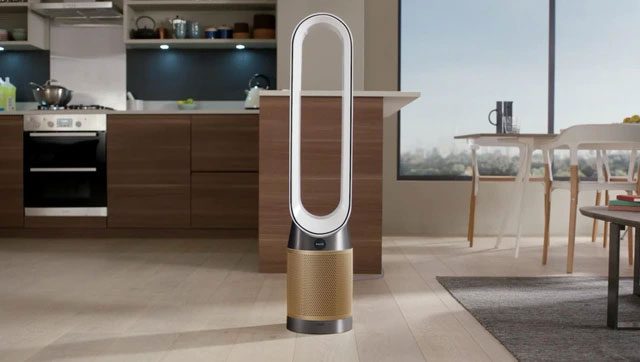
The Dyson Purifier Cool air purifier has a formaldehyde removal feature – (Photo: Dyson).
It Also Comes from Humidity
Many studies have shown that household wood can release formaldehyde into the air, and data indicate that particleboard is a significant source of formaldehyde emissions. Besides particleboard, some building materials, coatings, and other household items can also emit formaldehyde. In fact, formaldehyde is one of the common indoor air pollutants.
Living in an atmosphere rich in formaldehyde, specifically at a density of 0.1 ppm (which means 1 part of formaldehyde per 10 million parts of air), can cause skin and eye discomfort, along with headaches, shortness of breath, and throat irritation.
In experiments, humidity in the air is one of the key factors causing wood to release formaldehyde. It is evident that formaldehyde has existed in the air for a long time, especially during these humid days. However, we have been overlooking it for some time now.
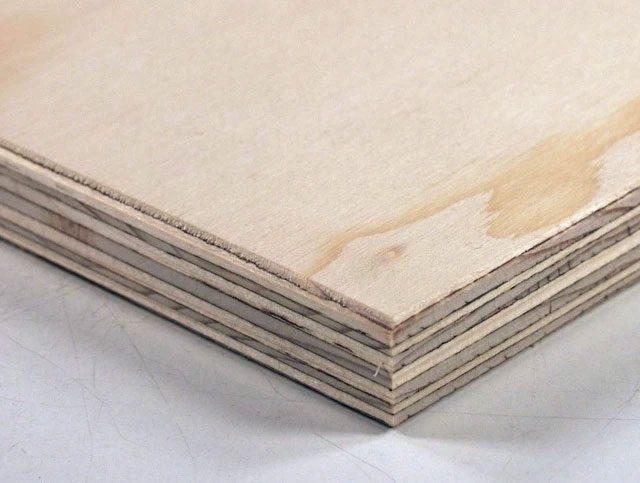
Particleboard is one of the sources of formaldehyde – (Photo: Internet).
Official information from Dyson indicates that the formaldehyde filter in the Purifier Cool line will decompose the toxic molecule into a small amount of water vapor and CO2. The formaldehyde sensor in the unit will also inform you of the quantity of this harmful substance present in the air.
If possible, users can invest in advanced air purification devices. Purchasing a machine with advanced filtration technology is one thing, understanding how these filtration mechanisms work gives us additional knowledge alongside the joy of improving our quality of life.
Like most other technologies, as HEPA filters mature and production costs continue to decrease, we will be able to own advanced air purification devices at affordable prices.


















































